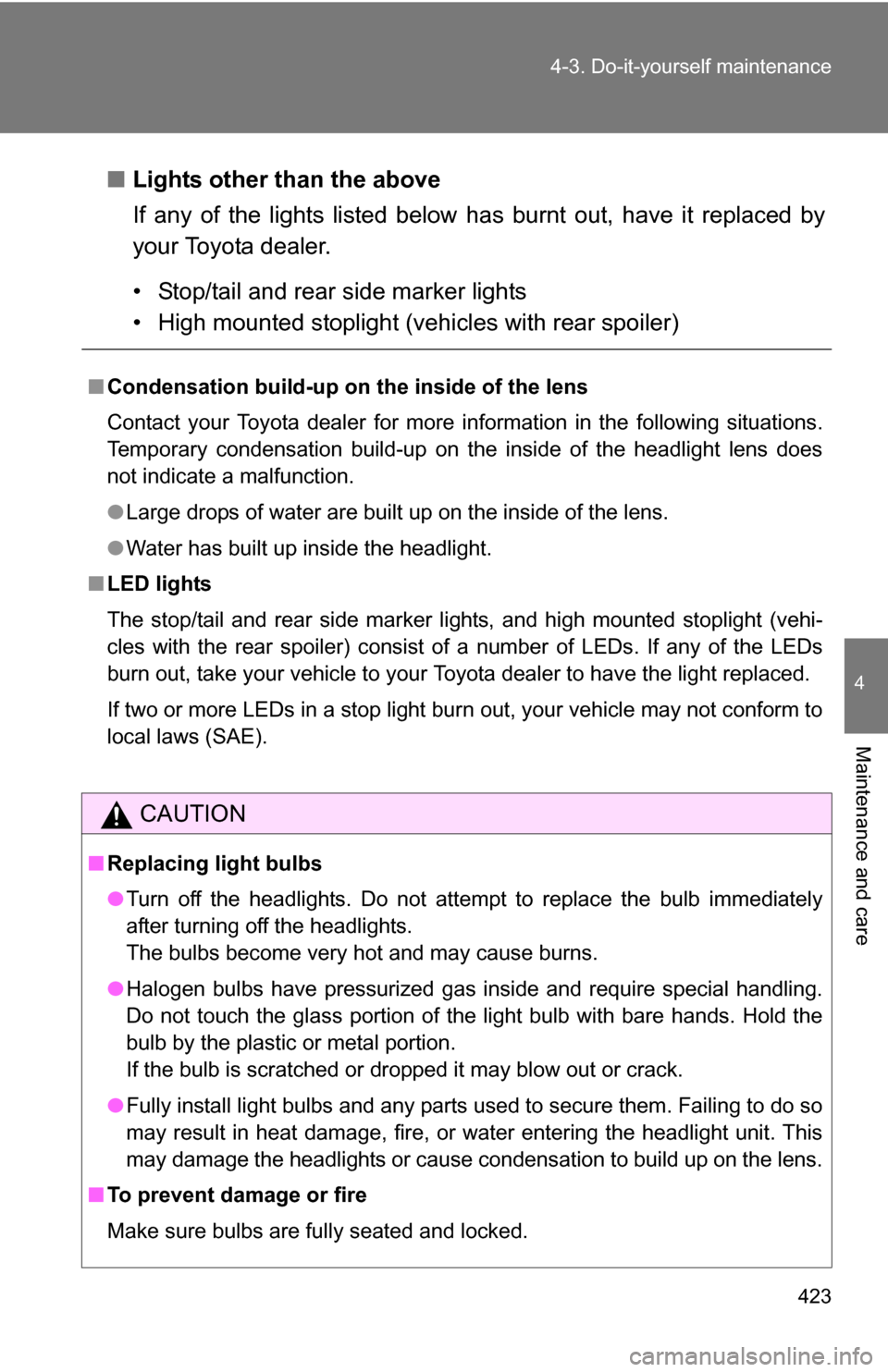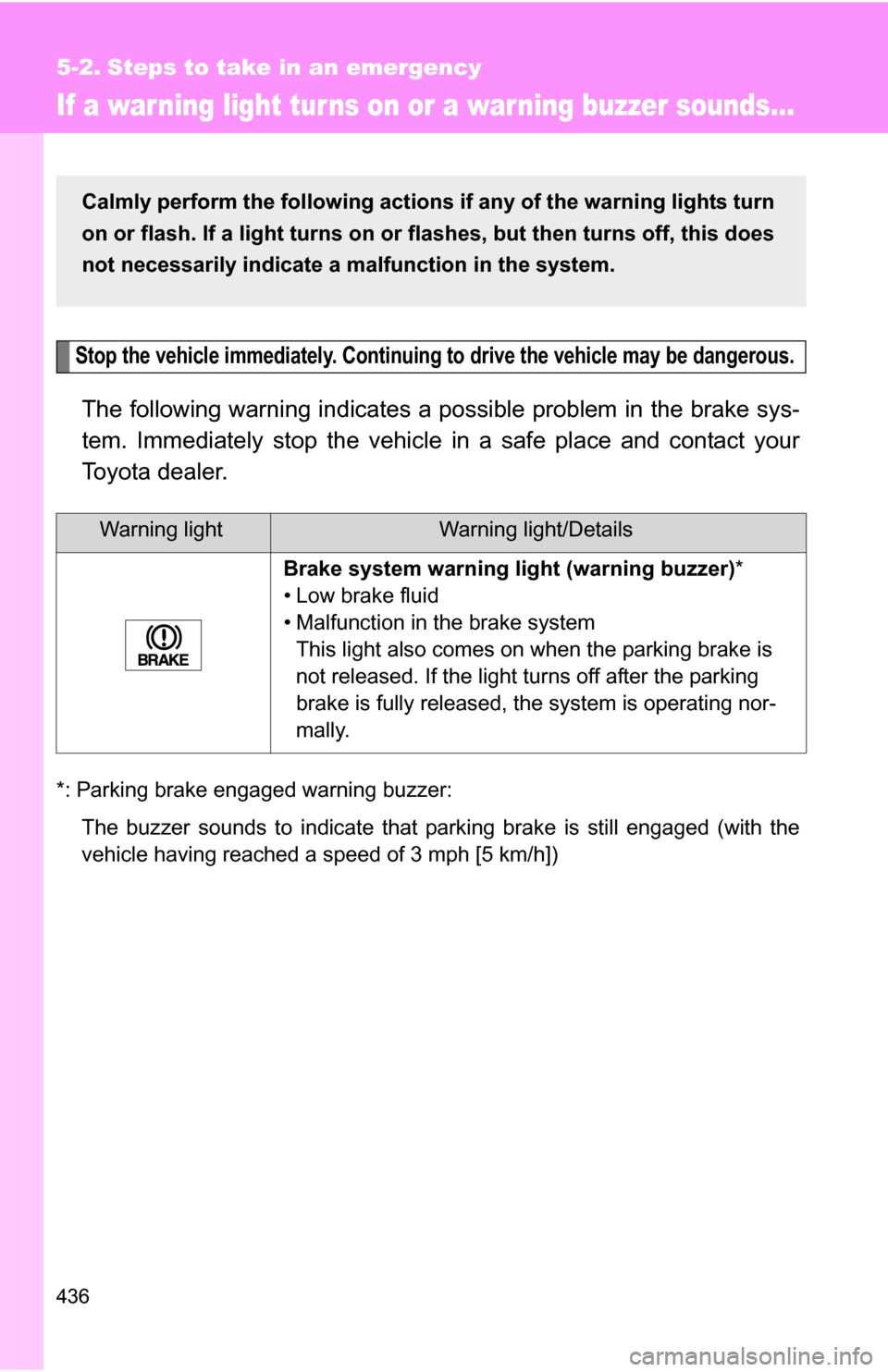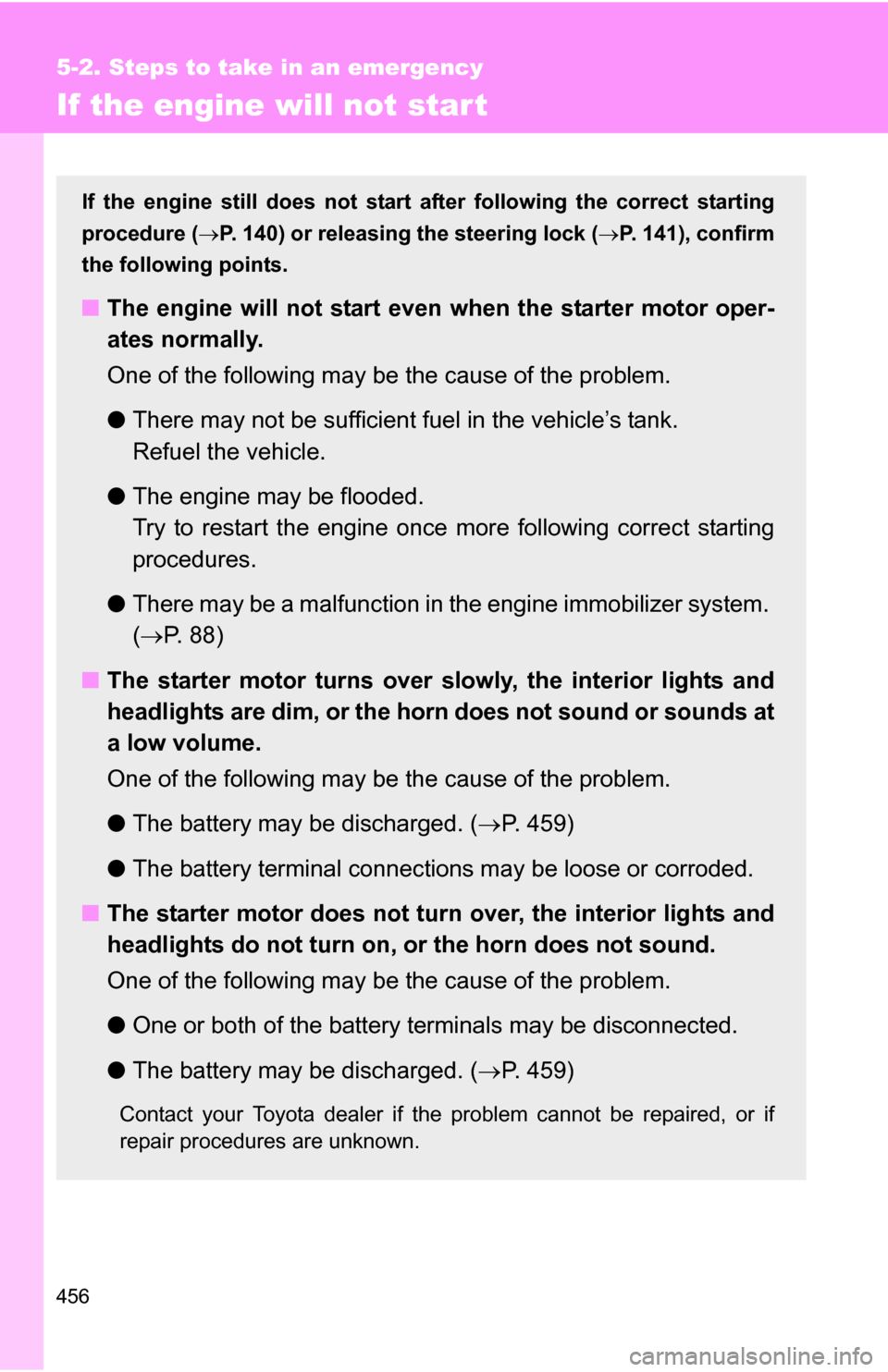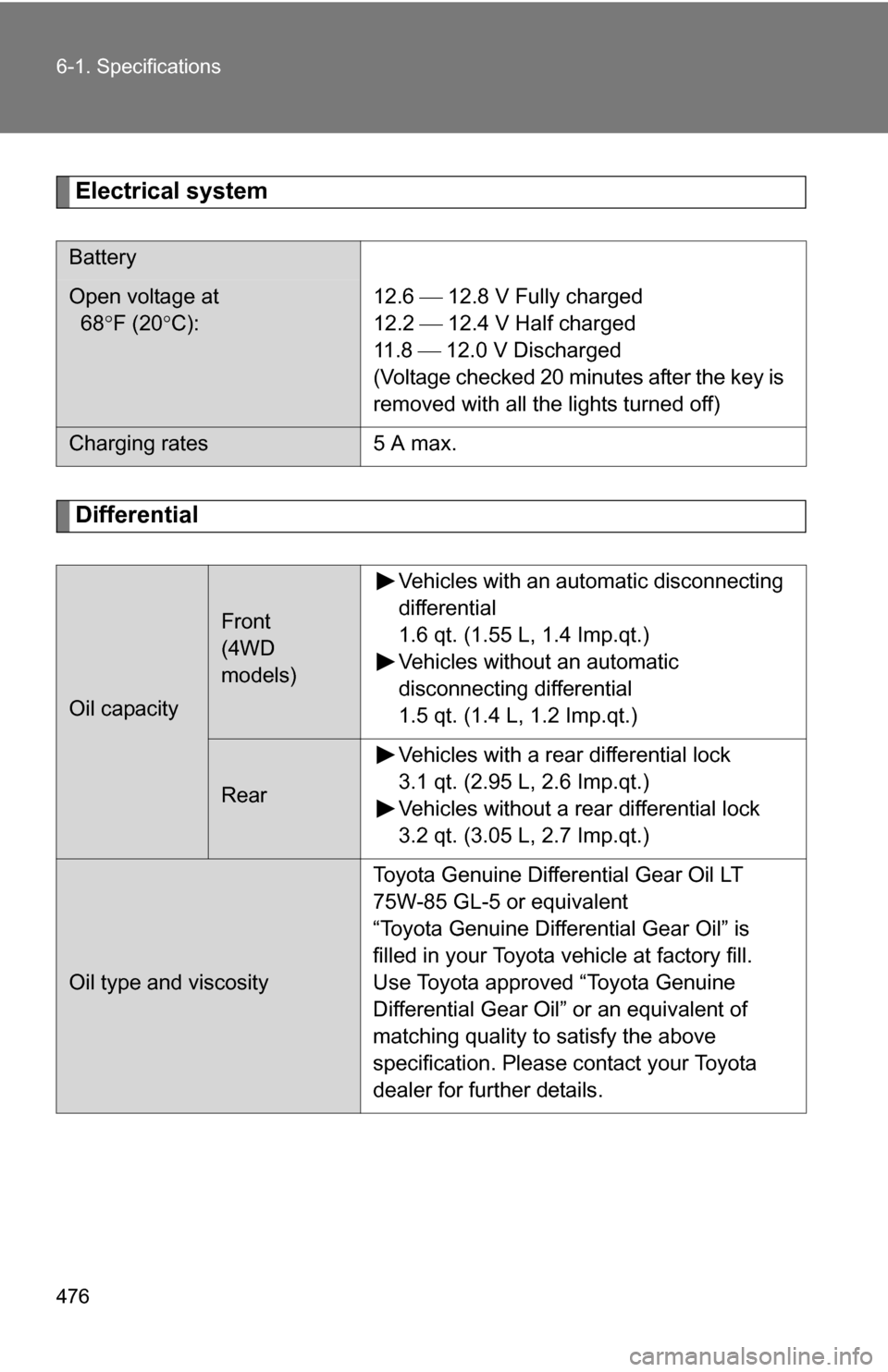Page 421 of 520
421
4-3. Do-it-yourself maintenance
4
Maintenance and care
■
License plate lights
Remove the screws and cover.
Remove the light bulb.
Page 423 of 520

423
4-3. Do-it-yourself maintenance
4
Maintenance and care
■
Lights other than the above
If any of the lights listed below has burnt out, have it replaced by
your Toyota dealer.
• Stop/tail and rear side marker lights
• High mounted stoplight (vehicles with rear spoiler)
■ Condensation build-up on th e inside of the lens
Contact your Toyota dealer for more information in the following situations.
Temporary condensation build-up on the inside of the headlight lens does
not indicate a malfunction.
● Large drops of water are built up on the inside of the lens.
● Water has built up inside the headlight.
■ LED lights
The stop/tail and rear side marker lights, and high mounted stoplight (vehi-
cles with the rear spoiler) consist of a number of LEDs. If any of the LEDs
burn out, take your vehicle to your Toyota dealer to have the light replaced.
If two or more LEDs in a stop light burn out, your vehicle may not conform to
local laws (SAE).
CAUTION
■Replacing light bulbs
●Turn off the headlights. Do not attempt to replace the bulb immediately
after turning off the headlights.
The bulbs become very hot and may cause burns.
● Halogen bulbs have pressurized gas inside and require special handling.
Do not touch the glass portion of the light bulb with bare hands. Hold the
bulb by the plastic or metal portion.
If the bulb is scratched or dropped it may blow out or crack.
● Fully install light bulbs and any parts used to secure them. Failing to do so
may result in heat damage, fire, or water entering the headlight unit. This
may damage the headlights or cause condensation to build up on the lens.
■ To prevent damage or fire
Make sure bulbs are fully seated and locked.
Page 426 of 520
426
5-1. Essential information
Emergency flashers
NOTICE
■To prevent battery discharge
Do not leave the emergency flashers on longer than necessary when the
engine is not running.
Use the emergency flashers if th e vehicle malfunctions or is
involved in an accident.
Press the switch to flash all
the turn signal lights. To turn
them off, press the switch
once again.
Page 436 of 520

436
5-2. Steps to take in an emergency
If a war ning light tur ns on or a war ning buzzer sounds...
Stop the vehicle immediately. Continuing to drive the vehicle may be dangerous.
The following warning indicates a possible problem in the brake sys-
tem. Immediately stop the vehicle in a safe place and contact your
Toyota dealer.
*: Parking brake engaged warning buzzer:
The buzzer sounds to indicate that parking brake is still engaged (with the
vehicle having reached a speed of 3 mph [5 km/h])
Warning lightWarning light/Details
Brake system warning light (warning buzzer) *
• Low brake fluid
• Malfunction in the brake system This light also comes on when the parking brake is
not released. If the light turns off after the parking
brake is fully released, the system is operating nor-
mally.
Calmly perform the following actions if any of the warning lights turn
on or flash. If a light turns on or flashes, but then turns off, this does
not necessarily indicate a malfunction in the system.
Page 456 of 520

456
5-2. Steps to take in an emergency
If the engine will not star t
If the engine still does not start after following the correct starting
procedure ( P. 140) or releasing the steering lock (P. 141), confirm
the following points.
■ The engine will not start even when the starter motor oper-
ates normally.
One of the following may be the cause of the problem.
●There may not be sufficient fuel in the vehicle’s tank.
Refuel the vehicle.
● The engine may be flooded.
Try to restart the engine once more following correct starting
procedures.
● There may be a malfunction in the engine immobilizer system.
( P. 8 8 )
■ The starter motor turns over slowly, the interior lights and
headlights are dim, or the horn does not sound or sounds at
a low volume.
One of the following may be the cause of the problem.
●The battery may be discharged. ( P. 459)
● The battery terminal connec tions may be loose or corroded.
■ The starter motor does not turn over, the interior lights and
headlights do not turn on, or the horn does not sound.
One of the following may be the cause of the problem.
● One or both of the battery terminals may be disconnected.
● The battery may be discharged. ( P. 459)
Contact your Toyota dealer if the problem cannot be repaired, or if
repair procedures are unknown.
Page 460 of 520

460 5-2. Steps to take in an emergency
■Starting the engine when the battery is discharged
The engine cannot be started by push-starting.
■ Avoiding a discharged battery
●Turn off the headlights and the audio system while the engine is turned
off.
● Turn off any unnecessary electrical components when the vehicle is run-
ning at a low speed for an extended period, such as in heavy traffic, etc.
■ When the battery is removed or discharged
The power windows, power back window, back door and moon roof must be
initialized. ( P. 498)
Positive (+) battery terminal on your vehicle
Positive (+) battery terminal on the second vehicle
Negative (-) battery terminal on the second vehicle
Connect the jumper cable to ground on your vehicle as shown in
the illustration.
Start the engine of the second vehicle. Increase the engine
speed slightly and maintain at that level for approximately 5
minutes to recharge the battery of your vehicle.
Maintain the engine speed of the second vehicle and start
the vehicle’s engine.
Once the vehicle’s engine has started, remove the jumper
cables in the exact reverse order in which they were con-
nected.
Once the engine starts, have the vehicle checked at your Toyota
dealer as soon as possible.
Page 476 of 520

476 6-1. Specifications
Electrical system
Differential
Battery
Open voltage at
68F (20 C):12.6 12.8 V Fully charged
12.2 12.4 V Half charged
11 . 8 12.0 V Discharged
(Voltage checked 20 minutes after the key is
removed with all the lights turned off)
Charging rates5 A max.
Oil capacity
Front
(4WD
models) Vehicles with an automatic disconnecting
differential
1.6 qt. (1.55 L, 1.4 Imp.qt.)
Vehicles without an automatic
disconnecting differential
1.5 qt. (1.4 L, 1.2 Imp.qt.)
Rear
Vehicles with a rear differential lock
3.1 qt. (2.95 L, 2.6 Imp.qt.)
Vehicles without a rear differential lock
3.2 qt. (3.05 L, 2.7 Imp.qt.)
Oil type and viscosity Toyota Genuine Differential Gear Oil LT
75W-85 GL-5 or equivalent
“Toyota Genuine Differential Gear Oil” is
filled in your Toyota vehicle at factory fill.
Use Toyota approved “Toyota Genuine
Differential Gear Oil” or an equivalent of
matching quality to satisfy the above
specification. Please contact your Toyota
dealer for further details.
Page 480 of 520
480 6-1. Specifications
Light bulbs
A: HB3 halogen bulbs
B: H11 halogen bulbs
C: HB4 halogen bulbs
D: Wedge base bulbs (amber)
E: Single end bulbs
F: Wedge base bulbs (clear)
G: Double end bulbs
Light BulbsBulb No.WTy p e
ExteriorHeadlights (high beam) 9005 60 A
Headlights (low beam) — 55 B
Front fog lights 9006 51 C
Parking and front side
marker lights
2827 5 D
Front turn signal lights 1156NA 27 E
Rear turn signal lights — 21 D
Back-up lights 921 16 F
License plate lights 168 5 F
High mounted stoplight 921 16 F
Interior Interior light — 8 G
Personal lights — 5 F
Vanity lights — 3 G
Door courtesy lights — 3.8 F
Glove box light — 1.2 F
Luggage compartment
light
—8 G
Running board lights — 3.8 F